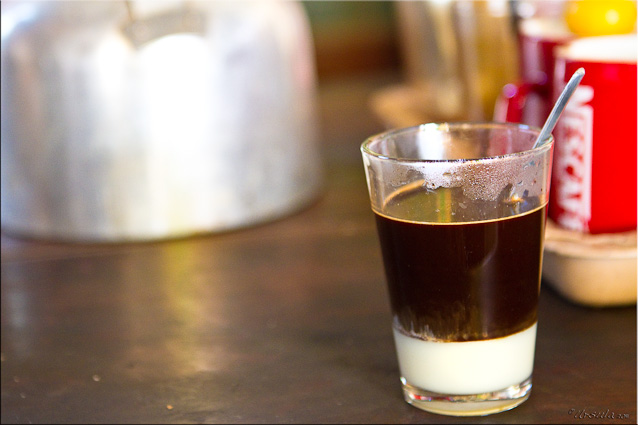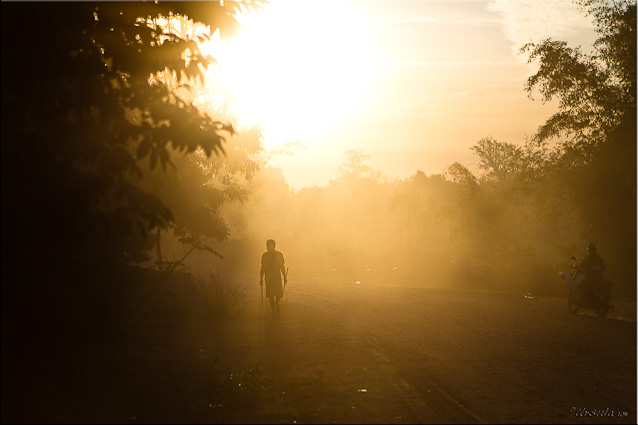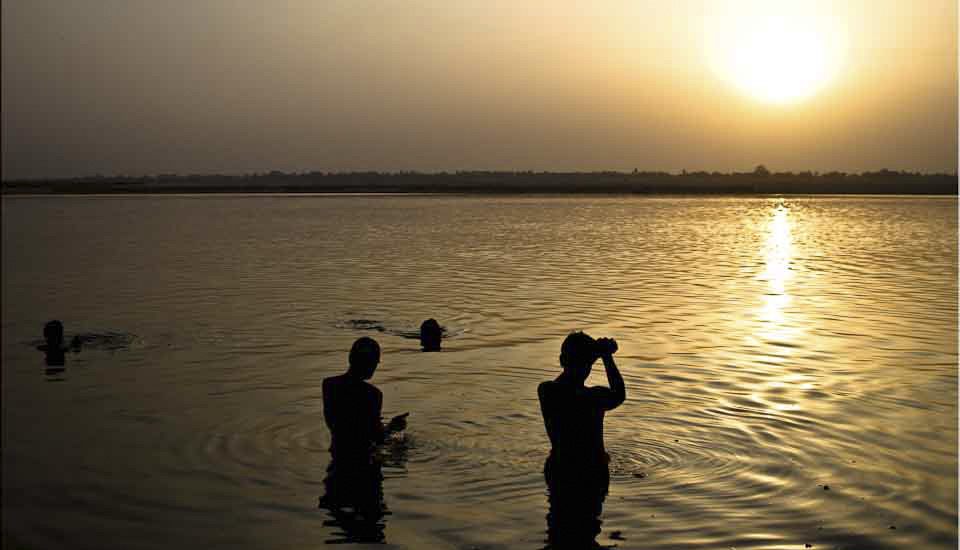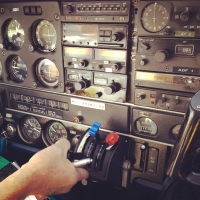I was in Japan several years ago with three other reasonably well-travelled adults. We had arrived into Tokyo late in the evening and were tired and hungry. We went to a shiny restaurant of chrome and formica across the road from the hotel and were met at the door with a “Hai!”, given menus, and shown to our tables. Once we had deciphered the pictures (there was no English) and decided what we wanted, we looked around for someone to take our order… Not a serving person in sight! We waited. And waited… We stood up and craned our necks. We waited. We tapped our feet and looked around. And waited. Finally, two young women, customers at another table, took pity on us. “You have to push the buzzer on the table,” they explained. Once we did this, our server instantly appeared, as if by magic, with an electronic pad, and transmitted our order to the kitchen as we were making it.

The Price of a Room: A Fist Full of Lao Kip
This memory came back to me as I was looking through my cache of photos from Attapeu in Southwestern Laos and I came across the one of our group leader, Khun Napat Sirisambhand, holding out the bundle of Kip she needed in order to pay for our rooms.
This particular trip, to Attapeu and to the Lawae and Taliang villages in the region, was rich with cultural experiences. But, I find it is often the seemingly simple things that stand out most when I travel: ordering food, paying for a room, or getting a cup of coffee…

Lao Coffee, or Pakxong Coffee, is Served in a Glass with a Rich Layer of Condensed Milk at the Bottom
(Lao coffee is wonderful! Don’t be fooled by the Nescafé mugs on the table in the picture: although Laos exports their robusta coffee to Thailand, where it goes into Nescafé instant, I’m drinking the locally-grown Bolovens Plateau arabica that is also grown in the region.)
It’s not just the differences for myself as a traveller – it is the differences I see in other people’s daily lives. How they get to work or do their shopping. How they wash their laundry; themselves; their dishes. What people’s houses and gardens look like. What pets or animals they keep in their yards. What the town streets look like…

Walking to Work in the Fields... Dusty Attapeu Sunrise

Going Shopping at the Attapeu Morning Markets

Suburban Housing: Wooden Home on Stilts, Attapeu

White Buffalo Calf in the Garden, Attapeu

Attapeu Street: Cleaning Supplies and Garbage Bin made from Recycled Tyres

Laundry Day, Attapeu Province

Lunch Dishes Hanging in the 'Kitchen' ~ Attapeu Province
Children may be children all over the world, but different cultures have vastly different expectations of them. What amounts to ‘sharing household tasks and responsibilities’ at one end of the spectrum can run into child labour at the other. On our travels, we crossed the Xe Kong by small ferry or ‘bug’. The old ferry operator was ably assisted by his pre-teen granddaughters. It was impossible to know how many hours a week they help or to what extent they are paid for their help…

Small Ferry, or 'Bug' on the Xe Kong River

Ferry Man and His Granddaughters

Young Lao Sisters: Working on the River
The trade-off for the expectation of work, I suppose, is the sense of belonging to a tightly networked community. We visited Ban La Yao, home to the Oye, one of the many ethnic groups in the Attapeu province. It seemed that half the village turned out to greet us, play music, sing, dance and show us their wicker weaving and pottery.

Oye House - Ban La Yao

Oye Dancers Get Ready to Perform (Again we See the Red Face of Someone who Has Used too Many Local Skin-Whitening Products)

Music, Singing, Drumming and Dancing: Women on the Wooden Xylophone

Smiling Oye Drummer

A Young Woman Models the Traditional Oye Headdress

Oye Mother and Children at their Daily Bath in the Yard
I wandered out into the dusty ‘main road’ (the only road?), past the ‘petrol station’ and had a chat with the local shopkeeper. He told me that they’d had no school teacher for some time. I stopped into the schoolyard, where three children were playing in the dirt with small stones – a game that looked like a cross between tiddly-winks and marbles.

Gas Station - Ban La Yao

Schoolyard - Ban La Yao

Oye Kids in the School Yard
The young girl who was was the ring-leader of the three had organised her friends into a game she was clearly winning. Children will make games out of whatever they have at hand, and those with sufficient intelligence and attitude will get ahead. I have no doubt she will do well! What sticks in my mind, though, is that tray of flat ‘marbles’; as I said earlier, it is often the small things that stand out.

Main Road - Ban La Yao
I hope you enjoy your travel experiences: large and small. 

























.jpg)


As always a true delight… happy travels guys
Thanks, Signe. Happy Campaign Trails!
very good!
Wonderful photos and insights back into our fabulous trip to Attapeu. All that early morning light,dusty roads and ferry crossing viewing shows so well here, and a pleasure to share…thx.
Thanks for visiting, Bev. I still think you got the best morning shot – and I’m in it!! 🙂
What beautiful photos. I arrived here on a search for petrol bottles (seems to me, not many Thai – Lao sites have written about them).
Hi Catherine,
I’m glad you dropped in! I have taken a lot of pictures of petrol bottles over the years, but I just checked and I haven’t posted any. I guess you are right – we don’t ‘publish’ them. 😀